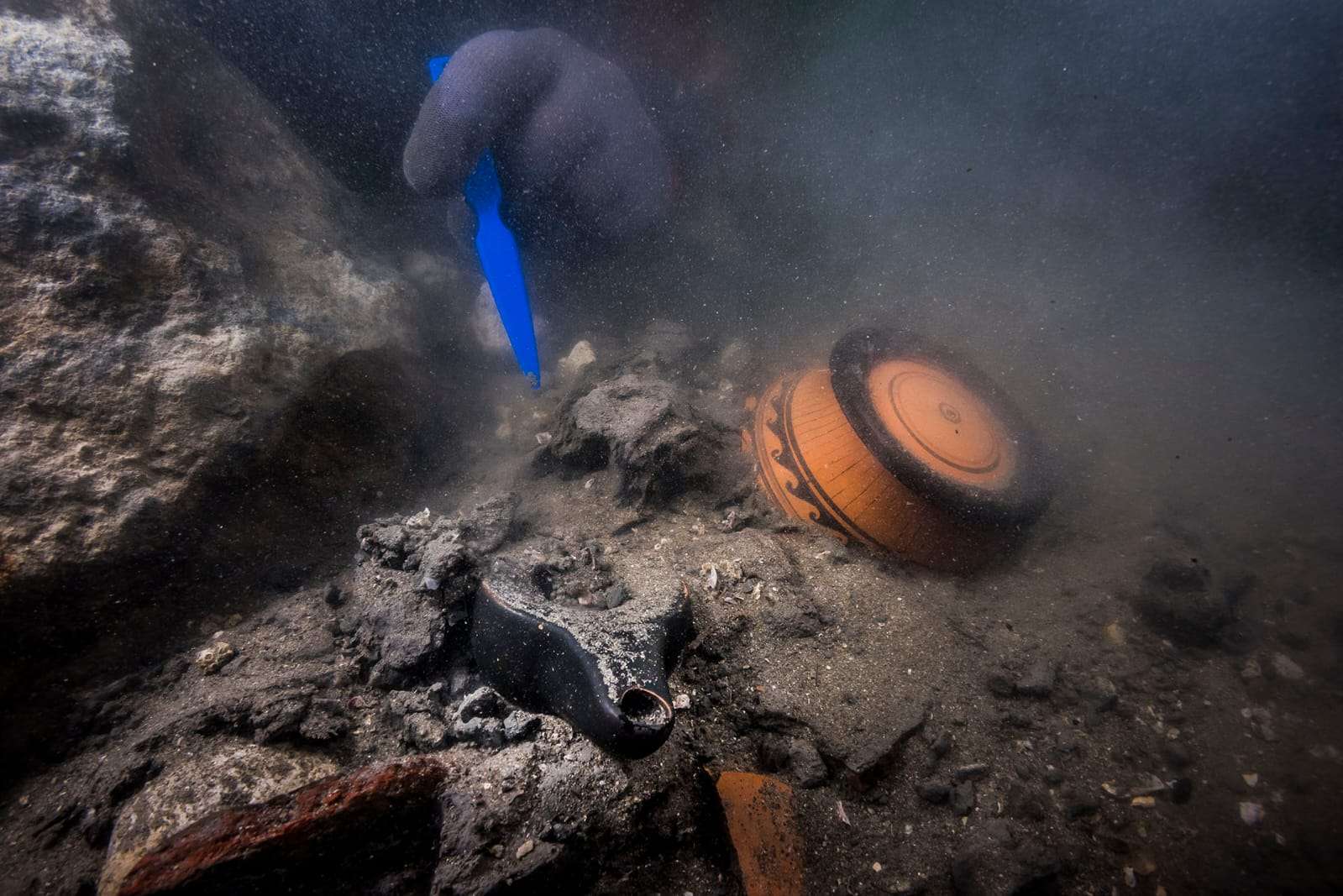The Egyptian-French archaeological mission of the European Institute of Underwater Archeology (IEASM) discovered on Monday the wreck of a warship from the Ptolemaic period and the remains of a Greek funerary area dating back to the beginning of the fourth century BC.
The discovery was made during an underwater excavation at the sunken city of Heracleion in Abu Qir bay in Alexandria.
Dr. Mostafa Waziry, secretary-general of Egypt’s Supreme Council of Antiquities, stated that the ship was to anchor in the canal that flowed along the south face of the Temple of Amun, but sank as a result of a devastating earthquake, when the temple collapsed and huge blocks fall on it, during the 2nd century BC.
The fallen blocks have kept the remains of the 25-meter-long ship pinned to the bottom of the deep canal along with the debris of the temple wrecks.
Dr. Ayman Ashmawy, head of the Egyptian Antiquities Sector, revealed that the wrecked ship was discovered under approximately 5 meters of hard clay mixed with temple debris, using underwater excavation devices such as a Sub-bottom profiler.
Franck Goddio, head of the mission of the European Institute for Underwater Archeology, stressed that the discovery of fast ships dating back to that time is still very rare. The Greek ships of this type were completely unknown until the discovery of the Punic ship Marsala (235 BC).
Ehab Fahmy, head of the Central Department of Underwater Antiquities, stated that the mission succeeded in finding the remains of a Greek funerary area dating back to the beginning of the fourth century BC, at the entrance to the northeastern canal of the city.
He noted that this discovery shows the presence of Greek merchants who lived in that city and controlled the entrance to Egypt at the mouth of the Canopic branch of the Nile.
Contributed by Yara Sameh










